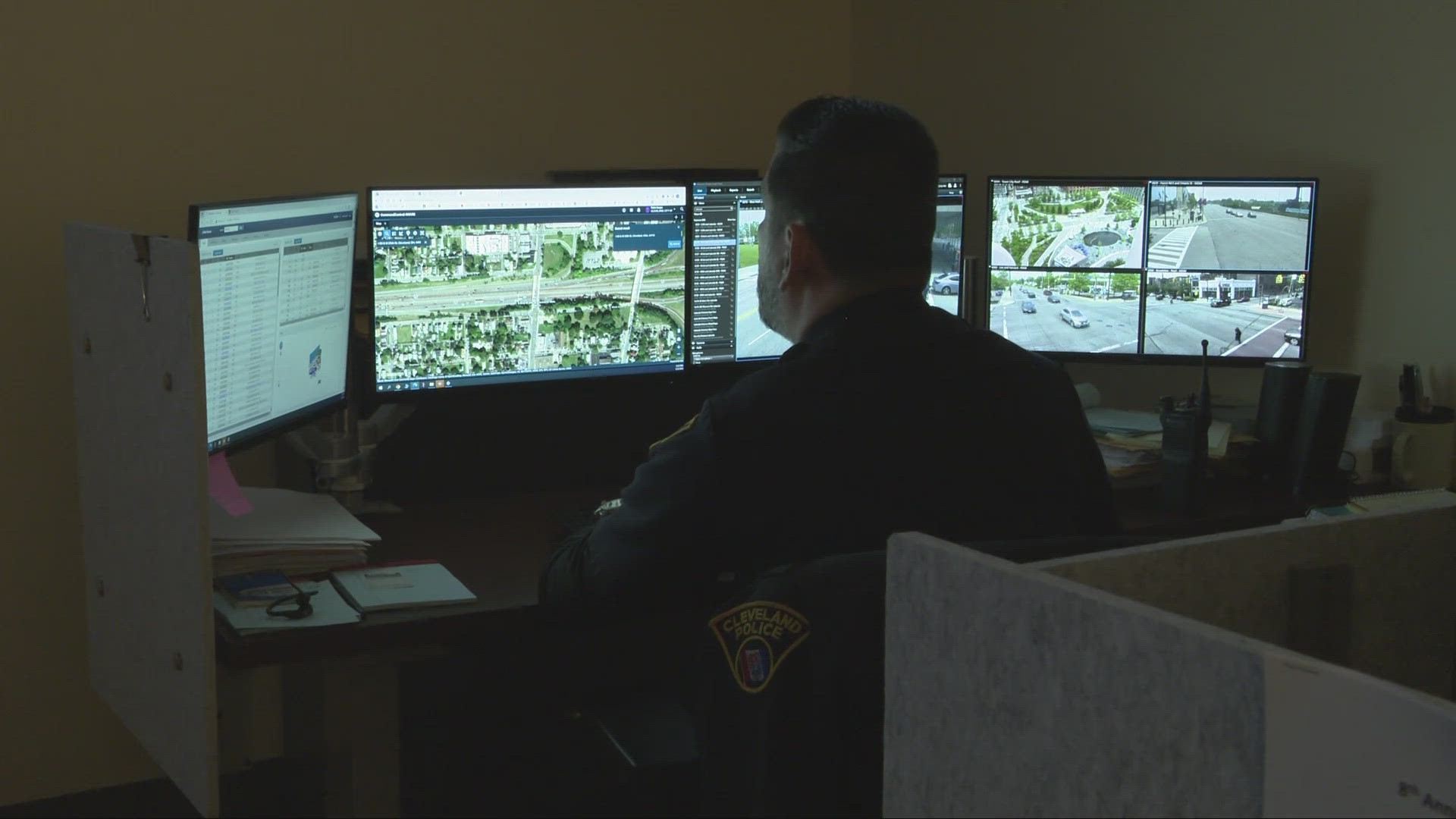CLEVELAND — At the Real Time Crime Center in Cleveland, police utilize technology to collect information and support officers responding to crimes in real time.
According to Sergeant Jose Garcia, the Center was originally the idea of former Cleveland Mayor Frank Jackson, and was started in 2019. Since then, Garcia has watched it grow, and hopes to continue expanding efforts.
Sgt. Garcia said that the Center is manned by detectives as well as civilians in the role of Investigative Research Specialists. They work together to collect data and communicate with dispatch and officers in the field.
“We have other technologies that allow us to bring in things like license plate readers, ShotSpotter, we can see where the zone cars are at, so when there is an incident, we can see where our cameras are versus where the incident or the zone cars are at,” Sgt. Garcia said. “We can even bring up live body cameras in here.”
ShotSpotter is a technology that is able to identify and locate gunfire.
On four large monitors in the Center, staff can also pull up camera feeds from City of Cleveland cameras as well as from businesses who allow police to connect to their systems. Sgt. Garcia said these cameras can be used to collect information for responding officers, and serve as an extra set of “eyes.”
Citizens can also register their surveillance cameras with police, so officers know they can reach out to request video from them. Sgt. Garcia said they are unable to watch home surveillance video — like Ring doorbell cameras, for example — live.
“There are times where we’re actually looking at something before the call was even broadcast,” he said. “So the officers don’t even know it’s happening yet, we’ve already started getting video, we’re sending in pictures and video to the dispatch so they can give it to the officers before they even know there’s an assignment.”
For example, Sgt. Garcia described a situation where they heard reports a suspect was driving a blue pick up truck, but from video feeds back at the Real Time Crime Center, they were able to determine the suspect was actually driving a silver SUV.
“Give them as much information as we can from descriptions of the suspect, the direction of travel, what type of car they have, or, if there are victims, to send EMS,” Sgt. Garcia said of the aim of collecting this information. “So the idea is to be the eyes before the officers can get there.”
The Center also uses software that can determine where officers are and identify nearby cameras, as well as pull information from databases about who may live in a home an officer is responding to, so they have background information heading into the scene.
A hope of the Center is also to increase efficiency, said Sgt. Garcia, especially given low numbers of officers within the Cleveland Division of Police.
Sgt. Garcia said the aim is not to surveil people, adding that there aren’t enough cameras to be able to see every move within the city.
“When a crime does happen, we’re here to help. That is the only purpose,” he said. “We’re not here watching the cameras, looking for someone jaywalking.”


